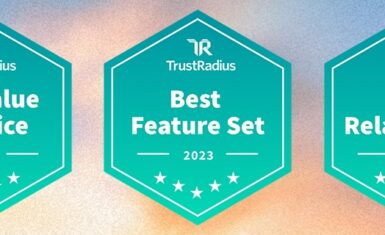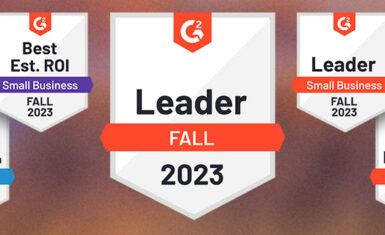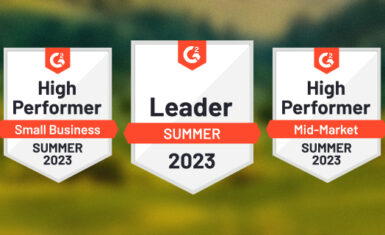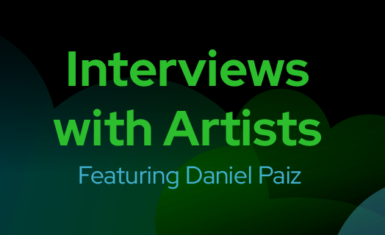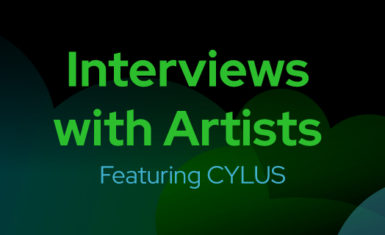The future of work is here. We’re calling it Work3. Not Work 3.0, because this isn’t a new chapter—it’s a new playbook. Work 1.0 was about putting your head down and ticking the boxes. Work 2.0 came in quickly with the onset of the pandemic and opened the world to the possibilities of digital-first, remote workplaces.
Work3 takes things to a completely new level. In Work3, knowledge workers aren’t measured by how, where, or when they do their work. They’re unleashed and empowered to do what they do best with the terms that suit them best. Leaders inspire and create psychological safety, ensuring that their teams feel comfortable taking risks and knowing that they’ll be rewarded for bold action within defined guardrails. Leaders monitor outcomes rather than inputs. For much more on Work3, read this fantastic blog by our CEO Christa Quarles.
What does the democratization of design have to do with Work3?
Design, though an inherently creative pursuit, used to be squeezed into the tight boxes that defined Work 1.0. Be creative, but only from 9-5. Be inspired, but do it in a cubicle with bland walls and trite inspirational posters. Be innovative and revolutionary, but only using the tools and processes we dictate for you.
If you’ve ever attempted to be creative on demand, you know how hard it is. It’s amazing that so much incredible design emerged at all under the suffocating confines of Work 1.0. That speaks to the caliber of talent—not to mention grit—of those who thrived within those confines.
Work 2.0 largely removed the physical boundaries of Work 1.0 while maintaining many of the same structures and restrictions. That’s progress, but it’s nowhere near enough.
In Work3, design happens when, where, and how creativity happens. Designers and artists can seize the moment, capturing inspiration as it strikes, whether it’s at a coffee shop, on the beach, in an office, or on the couch at 3 a.m.
Democratization means not just making this type of design permissible, but actually making it possible. That possibility hinges on access—to the right tools, to the right creative spaces, and to people (especially leaders) who are in full support. In Work3, leaders don’t “acquiesce” to a personalized schedule and location and work style. They champion it. And that doesn’t mean leaders are less invested in outcomes. In Work3, leaders can focus more on outcomes because they’re less tied up in managing inputs.
With the right tools and flexible work schedules, design can happen anytime, anywhere and with anyone. And this isn’t only for professional designers. We think design should be for all. Designers and non-designers alike should be able to develop creative projects, start to finish, on any device, without restriction. Our goal is not to remove the need for professional designers. Instead, we want to give those who want to be creative the tools, skills, and confidence to do so.
Why shouldn’t everyone be given the access and freedom they need to be creative?
Think your industry doesn’t need design? Consider this: studies have shown that design-led companies are more likely to successfully launch new products, are better equipped to innovate, and even outperform their competitors in the stock market.
Design thinking fosters creative innovation and problem-solving whether you’re solving an accounting dilemma as a finance professional, envisioning employee engagement solutions as an HR rep, breaking through a sales plateau, or any number of other applications. Organizations can benefit from the diverse minds and ideas in their workforces rather than restricting creativity to specific departments, improving employee engagement, boosting productivity, and driving business growth.
Design and creative work shouldn’t be gatekept. So many people in so many roles and industries would benefit from creative tools, but many lack access to those tools, and/or feel they don’t have the necessary skills, time, or training to use them. To fit the needs of today’s designers and non-designers, design software should be collaborative and more accessible.
Again, access is everything. CorelDRAW Graphics Suite makes it simpler to get up and running in the software with access to training modules, personalized learning, creative templates, and practice projects. Plus, it offers designers, non-designers, and teams the ability to collaborate on projects in real-time, from anywhere.
Creativity, freedom, and innovation are at the heart of Work3, and that’s where the world is going. It’s time to get the tools to take you there.

